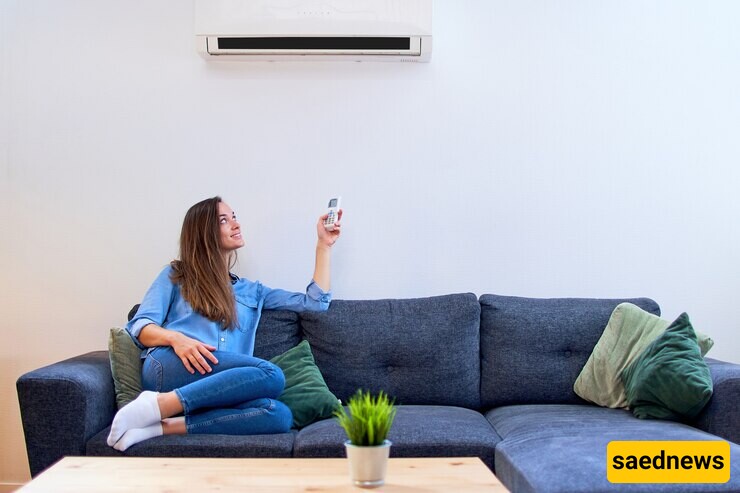SAEDNEWS: Here are some interesting ways to reduce electricity consumption in air conditioners.

With the arrival of summer and warmer days, everyone starts using air conditioners. However, concerns about air conditioner electricity consumption and skyrocketing bills can dampen the enjoyment of the cool air. Therefore, we all seek ways to reduce air conditioner electricity usage and wonder how to achieve it. This article provides essential tips to help lower air conditioner electricity consumption.

Here are tips to help you reduce air conditioner electricity consumption without needing a special device (some of these tips are sourced from the reputable EnerCare):
Install the Air Conditioner in the Right Place The location of the air conditioner installation is crucial. Improper installation can increase electricity consumption. It is recommended to place the indoor unit opposite the seating area. Due to the accumulation of hot air under the ceiling, the indoor unit should be installed lower. The outdoor unit should be installed where free airflow can easily pass behind it.
Pay Attention to the Energy Label To reduce electricity consumption, use air conditioners with inverters or energy levels A or B. Inverters adjust the compressor speed according to consumption needs. Review the technical specifications and pay attention to the EER (Energy Efficiency Ratio) of the device to ensure it meets your cooling requirements without consuming excessive electricity.
Set the Temperature Appropriately Set the air conditioner temperature to a comfortable level. Overcooling can lead to unnecessary electricity consumption. A suitable temperature for air conditioners is between 24 to 26 degrees Celsius, which can reduce the compressor's workload and electricity usage.
Choose the Right Capacity Choosing an air conditioner with the appropriate capacity for your space can reduce electricity consumption by up to 20%. For top-floor apartments, consider a cooling capacity of 700 to 800 BTU per square meter for residential units, and 900 to 1200 BTU for commercial spaces. For middle-floor units, 400 to 500 BTU for residential and 700 to 1000 BTU for commercial units are recommended.
Use Energy-Efficient Light Bulbs Replace old light bulbs with energy-efficient ones. Traditional bulbs generate excess heat, increasing the air conditioner's workload to maintain the desired temperature, thus raising electricity consumption.
Ensure the Device is in Good Condition If the air conditioner has faults, it will consume more electricity to achieve the set temperature. Regular annual servicing and timely repairs by a specialist can prevent issues and maintain efficiency.
Regular Maintenance Regular servicing by a professional can prevent technical issues, improve efficiency, and reduce electricity consumption. Ensure the air conditioner is in top working condition for optimal performance.
Use a Modern Thermostat Programmable thermostats allow you to set specific times for the air conditioner to turn on and off, and adjust the desired temperature. This can significantly reduce electricity consumption by operating the air conditioner only when necessary.
An electricity saving device for air conditioners stores electrical energy when the rotary motor shuts off due to cold air saturation, thus saving electricity. Using such a device can help reduce air conditioner electricity consumption.
Air conditioner electricity consumption in fan mode is significantly lower. When the thermostat is functioning correctly, the air conditioner switches to fan mode upon reaching the set temperature, which efficiently cools the environment with minimal electricity usage.

